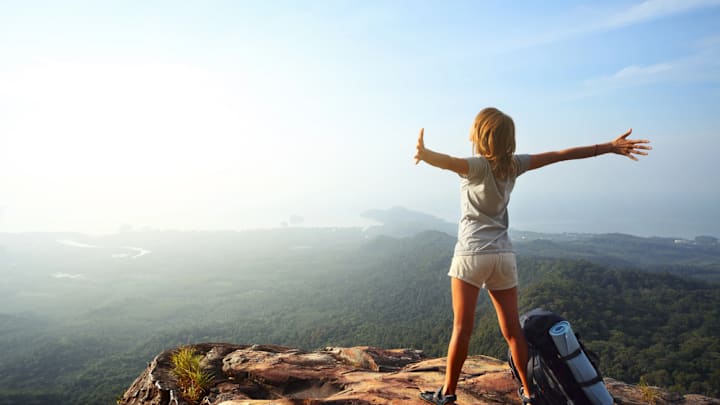Solo Travel and the Art of Being With Yourself

Somewhere between boarding a plane alone and ordering dinner for one in a foreign city, you start to hear your own voice a little more clearly. Not the internal monologue that races through to-do lists or replays conversations, but something quieter—more grounded. The kind of voice that only shows up when no one else is around to drown it out.
That’s the unexpected gift of solo travel. You go thinking it’s about seeing the world. And it is. But it’s also about learning how to be in your own company without needing to fill the silence.
The First Meal Alone
The first solo meal always feels awkward. You fidget with the menu. You pretend to scroll. You glance around, half-expecting someone to wonder why you're alone. But no one does. They’re too busy with their own conversations, their own lives.
Eventually, you stop performing. You look up. You really taste your food. And for the first time in a long while, you realize you’re not lonely—you’re just alone. And that’s not a bad thing. It’s a beginning.
Waking Without a Script
There’s a freedom in waking up with no one else’s plans to consider. No compromises, no negotiations, no pressure to fill the day with activity. You get to ask yourself: What do I want today to feel like? Not what should I do, or what must I see—but what would bring me joy, right now?
Some days that means visiting a museum. Other days it means sitting in the same café all morning with a book and watching the world move around you. The point isn’t what you do. The point is that you’re learning to follow your own rhythms.
The Conversations You Didn’t Expect
Solo travel doesn't mean isolation. In fact, being alone often makes you more open to connection. You chat with locals, ask for directions, linger a little longer in bookstores where someone might strike up a conversation.
These encounters—fleeting, unscripted—become part of your internal landscape. You carry them with you, not because they were profound, but because they were real, and yours alone.
Getting Lost and Finding Yourself
When you travel alone, getting lost is part of the deal. There’s no one else to navigate, no one to blame. It’s just you, a map, maybe a few wrong turns, and the unexpected beauty that comes when you stop trying to control the experience.
In those moments of disorientation, something shifts. You learn to trust yourself, to be okay not knowing, to meet uncertainty with curiosity instead of fear. And those are skills you bring home with you, tucked between souvenirs and worn pages of your travel journal.
Rewriting the Narrative of Aloneness
We’re often taught to fear being alone. To treat it as a temporary state, something to fix. But solo travel reframes that story. It shows you that aloneness can be rich, expansive, even joyful.
You learn that you can witness something breathtaking and not need to turn to someone and say, “Did you see that?” Because you did. You were there. And sometimes that’s enough.
What I Learned From My Own Company
Traveling alone didn’t make me a different person. It made me more of myself. It stripped away the noise and left me with someone I had overlooked for a long time: me.
I learned that I could navigate unfamiliar streets, handle awkward encounters, sit through silence, and enjoy my own thoughts. I discovered that being with myself didn’t mean being without. It meant being full—of choice, presence, and possibility.
The Takeaway: You Are Not the Absence of Others
Solo travel isn’t about proving anything. It’s not a test of independence or strength. It’s an invitation—to slow down, to listen inward, to become more attuned to the world and your place in it.
Being alone doesn't mean you're incomplete. It means you're making space for a relationship with yourself—a relationship that can hold both silence and laughter, solitude and connection.
So take the trip. Sit at the table for one. Walk without a destination. And discover that the best travel partner you might ever have is the one already walking beside you: you.